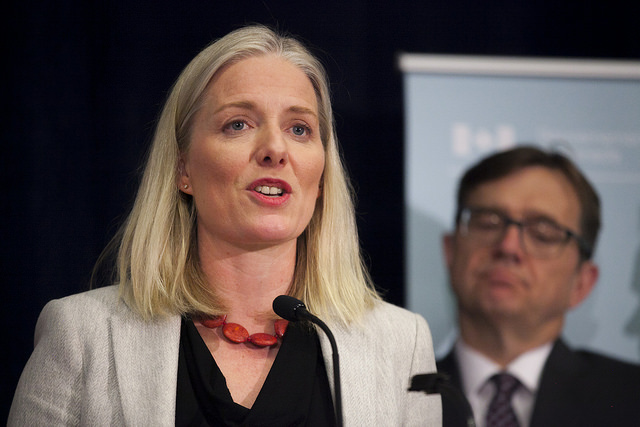Many issues, including trade, affect competitiveness. With the ongoing NAFTA discussions, there’s no question that it’s a challenging time for trade. However, this shouldn’t mean climate policy — particularly carbon pricing — is made to be a scapegoat for larger concerns around competitiveness. And that’s what we’re seeing happen with last week’s news on the changes to the federal carbon pricing backstop.
The recent changes relate to the level of subsidies provided to large industry under the federal backstop. The government has assessed the potential risk to large emitters' competitiveness that may arise from applying a carbon price and has set caps that provide protection against this concern. It does not change the price that is applied to the emissions ($20 per ton of GHG emissions (or CO2e) in 2019 rising to $50 per ton of CO2e in 2022), and is in line with the approach to pricing carbon for industry under the Pan-Canadian Framework on Clean Growth and Climate Change (PCF) as originally announced.
Here is what changed: the originally proposed output-based standards (OBS) for most large industrial sectors included in the output-based pricing system (OBPS) was moved from 70 per cent to 80 per cent of sectors’ national average emission intensity (i.e. the amount of carbon released per unit of product). This effectively decreases the percentage of total sectoral emissions on which the carbon price is applied from 30 per cent to 20 per cent. Because the OBS is based on average emission intensities, the percentage of total emissions priced will vary for individual firms. Under the changes announced, four sectors (cement, iron and steel mills, lime and nitrogen fertilizers) received additional relief with their OBS moving from 70 per cent to 90 per cent. With this announcement, the federal government has chosen to err on the side of caution by providing more relief to industry than is deemed warranted by credible analysis to protect competitiveness.
Despite these generous subsidies, we can expect some industries will continue to advocate for additional relief. Should any sector or facility claim that the current level of subsidy is insufficient, the federal government, having performed its own analysis based on available industry data, must put the burden of proof on industry to provide additional quality data to credibly assess whether with the current subsidy the cost of carbon would lead to relocation of production rather than incentivize emissions reductions. The bar for this assessment needs to be high.
While it is appropriate to have a system that addresses the risk of leakage, the output-based pricing system provides a subsidy to production and must therefore apply only to those sectors that can demonstrate material competitiveness pressures that result from a carbon pricing differential between Canada and competing jurisdictions. Misusing the output-based pricing system as a means to address competitiveness risks arising from other factors would lead to an inefficient system.
Beyond bringing to the forefront the important question of what constitutes appropriate relief, the federal government’s consultation process towards designing the backstop aims to offer clarity on what the rules of the system will be. Policy certainty is essential for industries to make investment decisions today that will deliver environmental and economic benefits over the short and long term. The negative impacts of policy uncertainty are currently being felt in Ontario, where the government is hastily removing a carbon pricing system. This move is to the detriment of both businesses that are losing the value of investments made under the cap-and-trade system, and of Ontarians who are abruptly losing the benefits of the associated carbon pricing revenues, and will feel the pains of investor uncertainty.
While the recent changes put forward by Environment and Climate Change Canada grants a slightly larger number of free emissions, it is largely in line with the federal commitment to price carbon with an increasing price signal, and shows that the federal government is moving forward with its commitment to price carbon as part of a credible plan to reduce emissions. That said, it’s essential that from here the level of ambition increases — this means the number of free emissions is decreased over time, the price increase schedule stays the same, and goes beyond the scheduled 2022.
Pricing carbon pollution is a key pillar of the PCF and economists and policy makers widely agree that it is an essential tool to efficiently and cost-effectively address climate change. For this very reason, carbon pricing is becoming the norm around the world; over 70 jurisdictions globally apply a price on carbon pollution. By creating a backstop, and moving to have all Canadian jurisdictions have a price on carbon in some form, it helps prepare Canadians for the low-carbon economy that the world is moving to.









